Willkommen: Hier finden Sie die deutsche Fassung des Briefes aus BerlinWelcome to our February Letter from Berlin! Welcome to this month's Letter from Berlin which presents two major solo exhibitions, Liam Gillick's just-opened The Work Life Effect at the Gwangju Museum of Art in Korea, and Ryan Gander's Natural and Conventional Signs installed in his impromptu Kunsthalle-like space Solid Haus, part of his studio complex in Suffolk and currently only accessible virtually. Our dedicated Online Viewing Rooms for Isa Melsheimer and Rosa Barba remain open and our new series Spotlight and All Access highlight works and exhibitions accessible virtually. Under the title Sun Rise | Sun Set an ambition group exhibition with a multi-layered responses to the fast unfolding eco-catastrophe opens exclusively digitally today at Berlin's Schinkel Pavillon with a major work by Pierre Huyghe. Rounding up our Letter is a selection of publications, among them a beautiful new catalogue for the 2017-2018 group exhibition Like a Moth to a Flame curated by Liam Gillick, Tom Eccles, and Mark Rappolt. Details can be found below. We hope you enjoy our Letter from Berlin!
|
|
|
Liam Gillick – The Work Life Effect, Gwangju Museum of Art
|
|
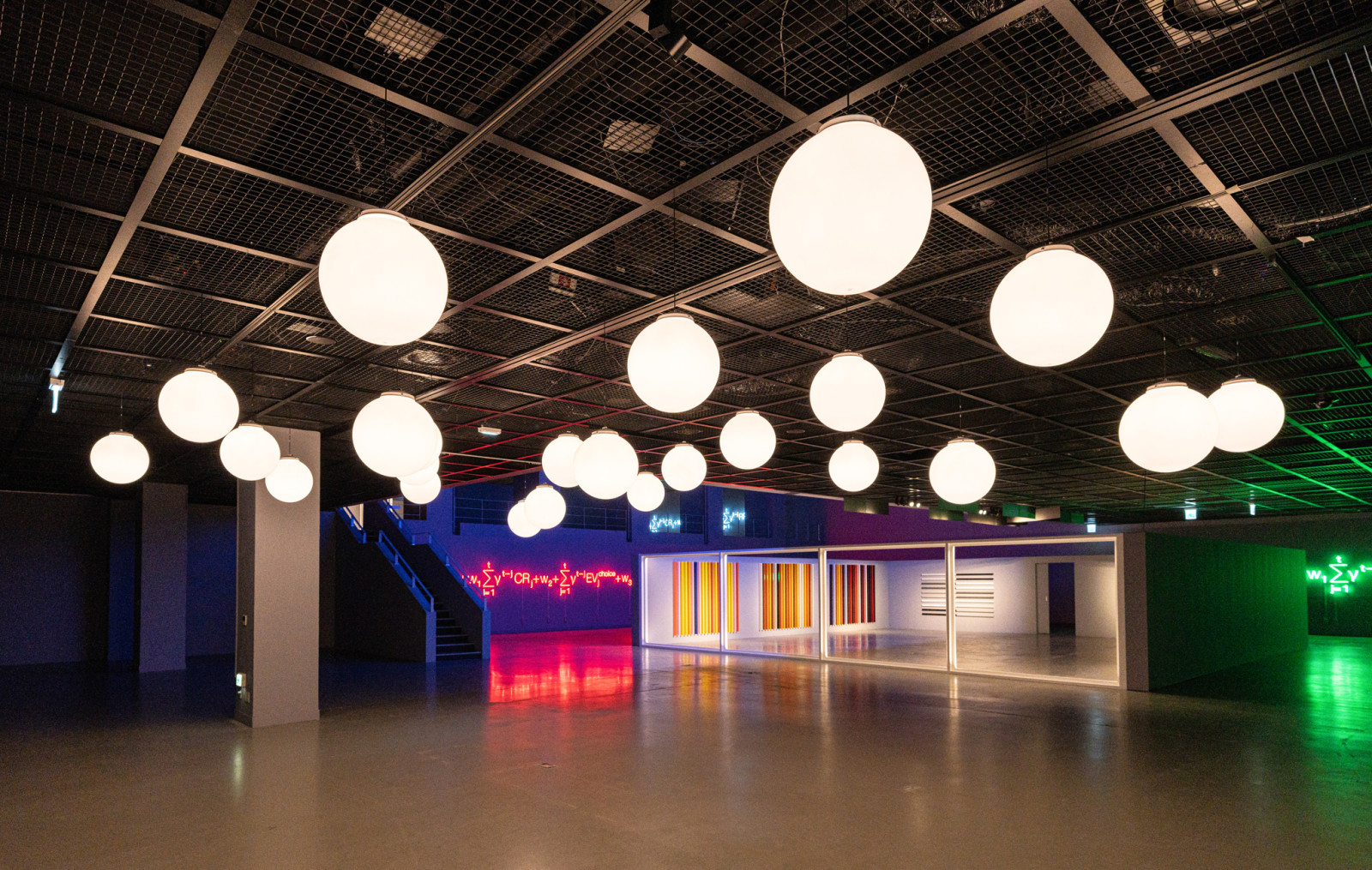
| Exhibition view: Liam Gillick, The Work Life Effect, Gwangju Museum of Art, 2021
Photo © Gwangju Museum of Art, Korea | |
|
The Work Life Effect is Liam Gillick’s first major solo museum exhibition in Asia. The exhibition continues the artist’s interest in questions of production, various modes of work and an endless search for a contemporary abstraction.
The title directly refers to this – alluding to the complex tensions between work and life. The Work Life Effect proposes a zone where we sense the effects of the merging of work and life that has accelerated in the digital period and under the conditions of the Covid-19 pandemic. The exhibition does not directly illustrate such processes, rather it evokes a twilight mood of lights, forms and affects that bring forward how emotional and formal aspects of perception and experience are altered when we are subjected to new modes of mediated existence.
The exhibition suggests both exterior and interior spaces. In these zones we see large equations glowing on the walls, as if the analytical data surrounding us were visible – replacing the neon lights of a city at night with tools to calculate human happiness.
Lights moving up and down operate as signs to the entrance of the exhibition – creating waves of shadows that move while we remain still. Two large architectural spaces are constructed inside the main room - with all other museum walls removed. They operate as semi-autonomous zones - neither within or without the museum itself. These two spaces within a space contain two paradoxical aspects of the artist’s work, namely abstraction in tension with a poetics of social life, experience and struggle. Both spaces resemble store fronts or enormous display cases. Brightly lit they appear to have glazed facades. However the glass is an illusion and one can easily step into them.
|
|
|

| Exhibition view: Liam Gillick, The Work Life Effect, Gwangju Museum of Art, 2021
Photo © Gwangju Museum of Art, Korea | |
|
The first enclosure contains a new series of abstract “fins” and “horizons”. These abstract wall based works allude to distinctly contemporary elements we find in the built world of architecture, industry and communication. The works have evolved from an earlier focus on false ceilings and dividing screens to evoke the cooling fins, server arrays and vents that are the circulatory organs of the built world.
The fins and horizons in the exhibition are new works that relate to a text written by the artist in 2004 titled “Construction of One”. In the text we follow a group of people who return to their former factory and start to use it as a site to understand all material and human relationships by deconstructing their former place of work and accounting for the origin of all construction materials. The works here are abstractions derived from the functional organs of a building. Resembling heat sinks or vents they suggest the building as a body and an abstraction that draws inspiration from server farms, hard drives and circuits.
|
|
|
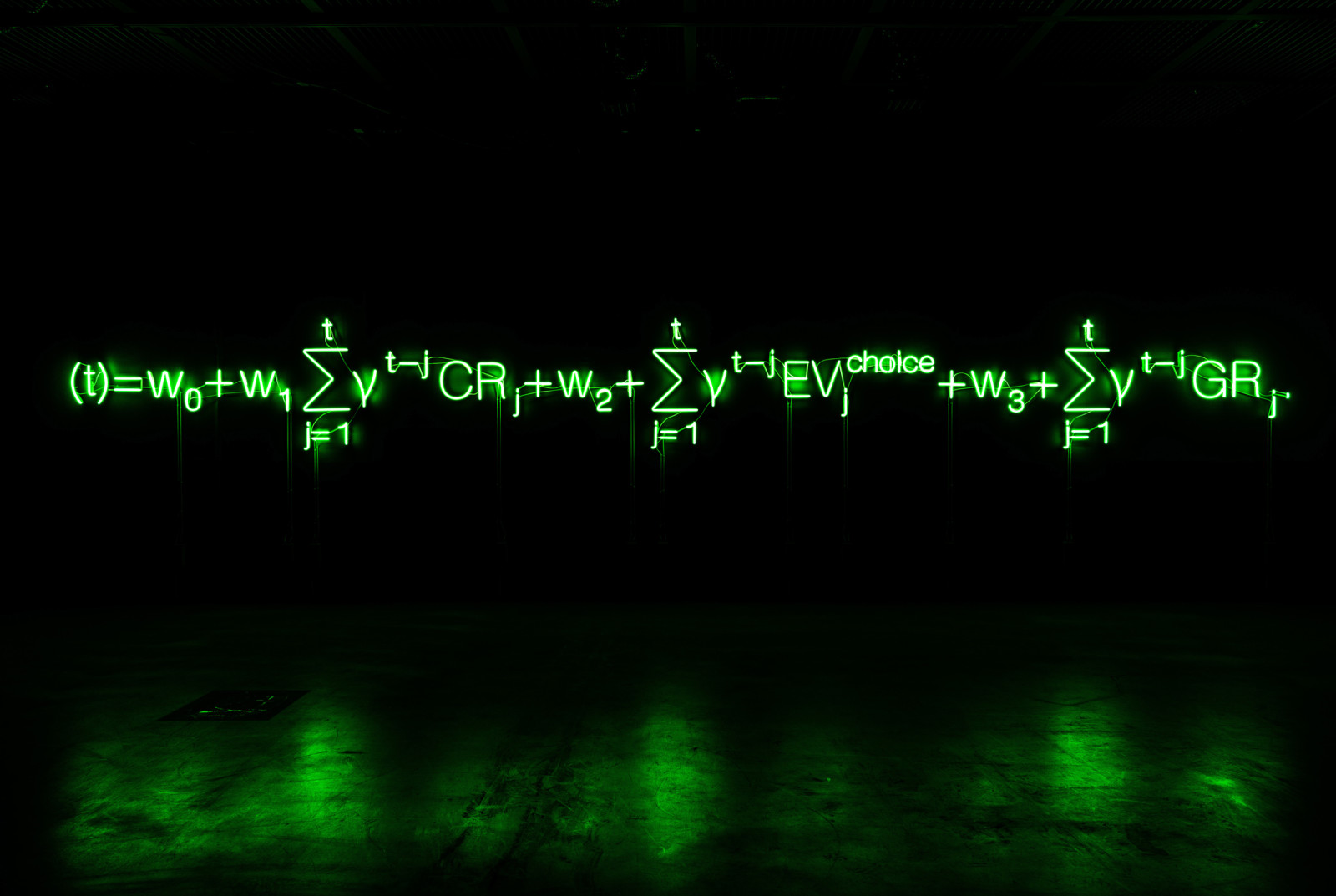
| Exhibition view: Liam Gillick, The Work Life Effect, Gwangju Museum of Art, 2021
Photo © Gwangju Museum of Art, Korea | |
|
A series of large brightly colored neon equations dominate the museum space. Each one is derived from an academic paper published in 2014 at University College London that laid out ways to calculate human happiness. Gillick has used mathematical equations in his work in many contexts. Notably at the Istanbul Biennale in 2015 and the Yinchuan Biennale, 2016.
Equations are an international language that can be understood across any linguistic border. They are tools - that exist to be used—and are only productive when information is properly plugged into them. There is an economy and beauty in equations that suggests a parallel visual language that exists as pure conceptual potential. An equation, theorem, principle. An expression of relationships. A set of terms as clear to a scientist or mathematician as a quote from a theorist might be to a contemporary artist. It is a construction that seems equally complex or facile depending upon your position in relation to specialization and the accumulation of knowledge.
The works offer the tools with which to reflect on material realities and carry thoughts across to human beings without prejudice. The complexity and elusiveness of the equations suggest the human hubris involved in attempting to quantify emotions such as happiness, love or discontent. |
|
|
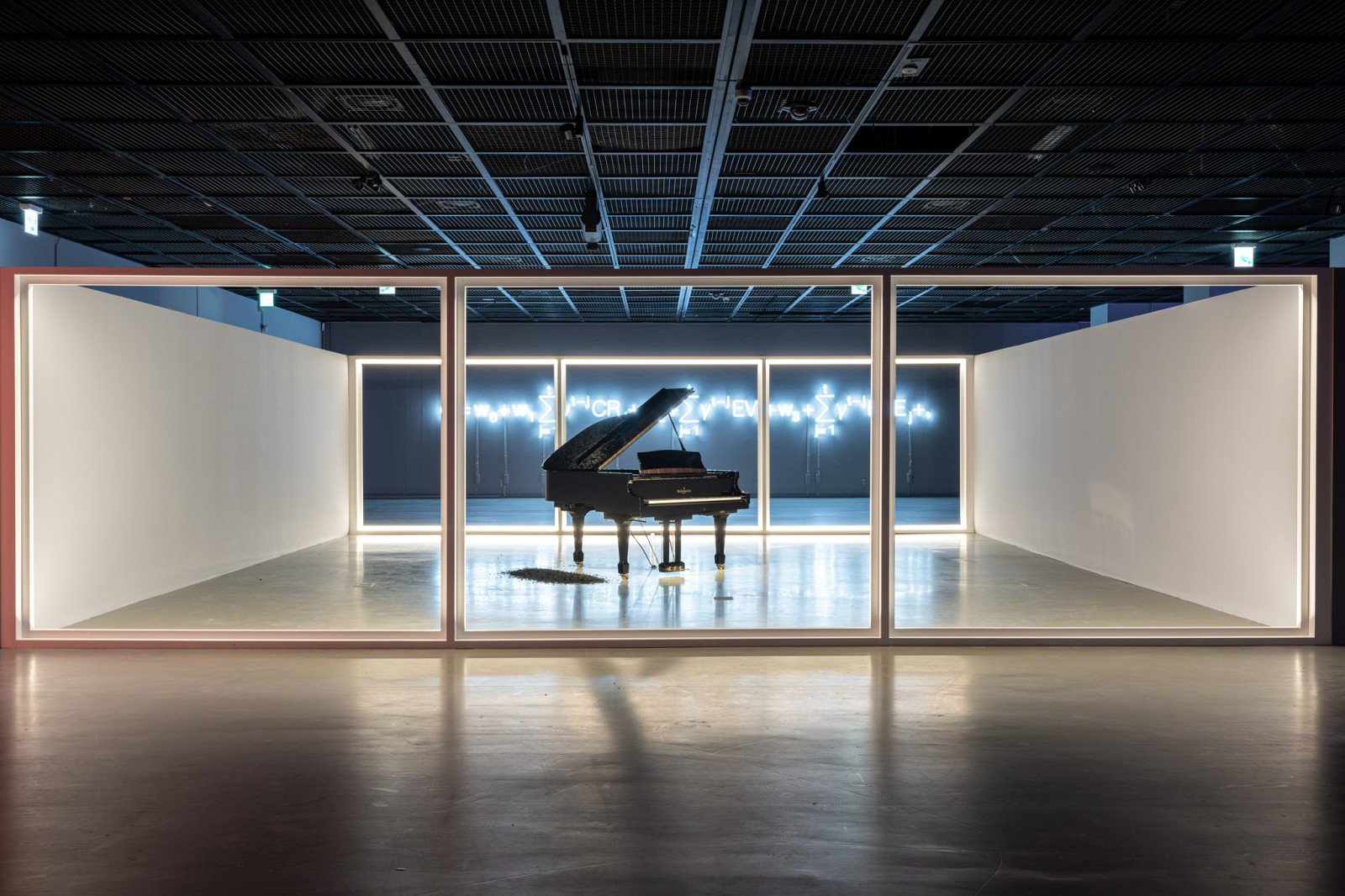
| Exhibition view: Liam Gillick, The Work Life Effect, Gwangju Museum of Art, 2021
Photo © Gwangju Museum of Art, Korea | |
|
The second enclosure contains the work Factories in the Snow (Il Tempo del Postino) (2007) an important work that comprises a digital player piano and a snow machine. The piano stands alone as black snow falls. What can be heard is the artist attempting to play from memory the song Grândola Vila Morena. It was originally broadcast on Portuguese radio to signal the beginning of the ‘Carnation Revolution’ in 1974.
This work was created for the Il Tempo del Postino in Manchester in 2007. A group exhibition that took place at Manchester Opera House. An adapted form of the work was subsequently included in Philippe Parreno’s exhibition Anywhere Anywhere out of the World at the Palais de Tokyo in 2013 where the piano played Petrushka by Stravinsky - and was used as a score and mechanism to control the lighting and movement within the exhibition.
|
|
|

| Exhibition view: Liam Gillick, The Work Life Effect, Gwangju Museum of Art, 2021
Photo © Gwangju Museum of Art, Korea | |
|
An important aspect of the exhibition extends to the lobby of the museum and the book lounge. Large graphic works on the windows provide a new glossary of terms to describe contemporary working conditions. The texts written on the big glass walls of the museum lobby are a parody of office and business language, pairing words that are quite authentic business “jargon” with unrelated language to create new phrases.
The combination of disparate words and structures creates a kind of poetic dissonance and confusion, a bit like the result of an automatic translation machine that does not make sense. The way language has changed under the new conditions of work are a central part of the artists writing and graphic works. Gillick has often drawn on a strategic "logical dislogic" and on a Situationist-inspired notion of play that acts as disruption in a self-consciously complex manner. Using concrete references and wit as a lure, the works continue to opaquely resist easy comprehension towards the creation of productive irritation.
Another graphic on the windows of the Museum Lounge shows a stylized Gwangju Kiosk, open 24/7 and selling many new “products” such as Production, Pain, Fire and Team Work.
These spaces are furnished with low tables and stools that provide areas for informal gathering, study and research. A program of education, performance and video streaming will be produced in these spaces and in the exhibition itself.
An exhibition catalogue will be published shortly.
|
|
|

| Exhibition view: Liam Gillick, The Work Life Effect, Gwangju Museum of Art, 2021
Photo © Gwangju Museum of Art, Korea | |
|
Ryan Gander – Natural and Conventional Signs, Solid Haus, Suffolk
|
|
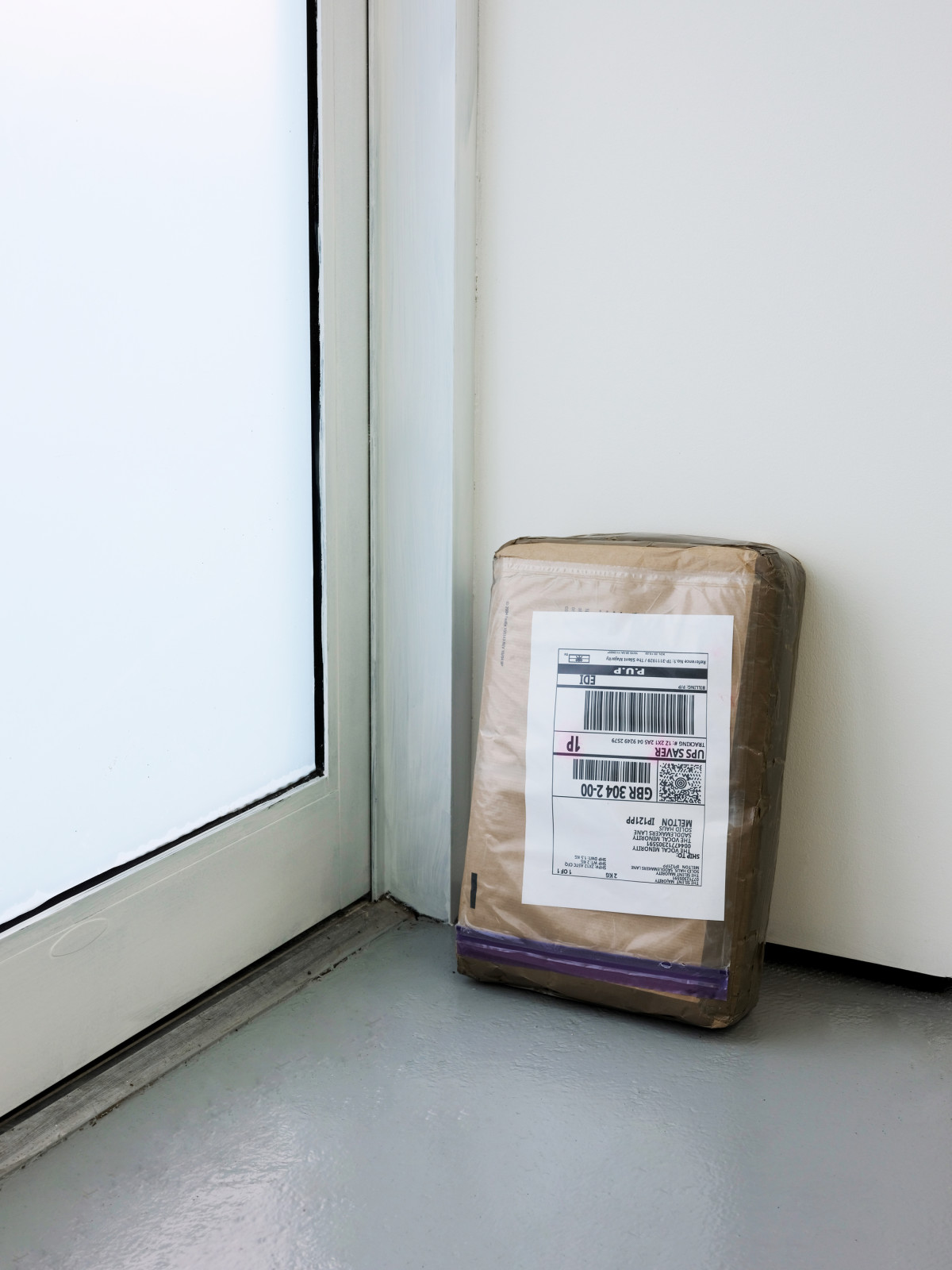
| Ryan Gander, The Silent Majority / The Vocal Minority, 2021
© VG Bild-Kunst, Bonn, 2021. Photo © Studio Ryan Gander
| |
|
With Natural and Conventional Signs Ryan Gander presents a selection of new works directly guided by the artists research at Princeton University undertaken during his time as a Hodder Fellow (2019-2020) and made during a period of reflection while the world paused amid a global pandemic.
Natural and Conventional Signs was originally planned to take place on the Princeton campus, however, with travel still an issue, Gander’s new work was installed at Solid Haus, an especially conceived impromptu Kunsthalle-like space constructed within the artist’s studio complex, situated in rural Suffolk, two hours east of London. With severe restrictions in place in Britain, the exhibition is currently accessible only virtually.
Gander has assembled an exhibition where the works have duality in meaning and utility; subverting the signs, tropes, and markers we see in our everyday world to shine new light on how we position ourselves in relation to the values of time, money, opportunity, attention and privilege.
“I’ve become a little obsessed with the idea that the world can be divided into ‘those things that naturally convey meaning’ and ‘those things that are made to convey meaning’,” said Gander. “I guess that is what Maurice Merleau-Ponty meant by ‘primary and secondary modes of expression’. Almost all art—perhaps with the exception of outsider art—is made of conventional signs, not natural ones. For me, the phenomenon of finding natural signs outside the safety of a gallery by happenstance—like a discarded bus ticket, a waning moon, footprints in the snow—is often a more memorable and significant experience than those I am fed and manipulated by, which we might find charged by the white spaces of the institutions of art. As we navigate the world we miss so much, there are endless flashes of magnificent provocations, but we have to look.”
|
|
|
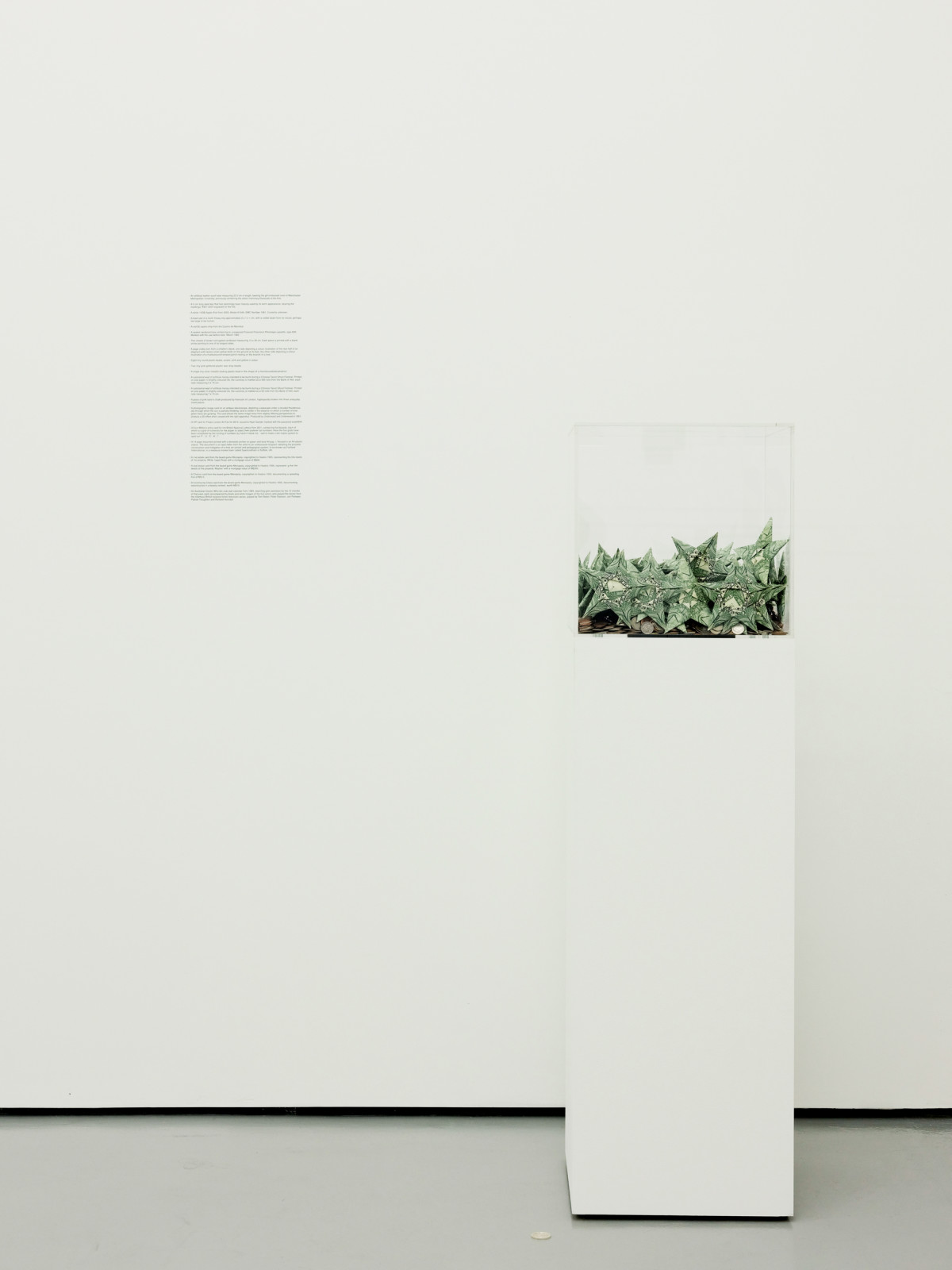
| Ryan Gander, Alchemy Box i - Being aware of the scope of what you could achieve, 2021
© VG Bild-Kunst, Bonn, 2021. Photo © Studio Ryan Gander
| |
|
One of the works references John Higgs’ The Future Starts Here: Adventures in the Twenty-First Century (2019): “Those immaterial things, spirits, gods, boundaries, tribes, laws, myths, flags, money, and corporations. If these things have a physical element it is little more than a piece of cloth or paper, or a small chunk of earth. It is in their immaterial aspect which we dream up and project onto the physical world, where their power and importance lie.”
What appears as a common donation collection box filled with coins and cash, is upon close inspection, filled with dollar bills folded into five-point stars using origami—a meditative tool that embraces the idea that time can be consumed in positive and generative ways while ironically exposing our inability to pause the flow of both our time and the formal valuing system of money.
|
|
|
|
Ryan Gander, Elusive System / Useless Machine (Alchemy Box iii - Often learning comes from discomfort), 2021
© VG Bild-Kunst, Bonn, 2021. Photo © Studio Ryan Gander
|
|
Ryan Gander, Elusive System / Useless Machine (Alchemy Box iii - Often learning comes from discomfort), 2021
© VG Bild-Kunst, Bonn, 2021. Photo © Studio Ryan Gander
|
|
|
Other works similarly invoke a kind of currency—thousands of black poker chips each numbered by hand with a white marker pen—taken out of circulation. Stacked without the aid of any fixatives into forty-nine individual piles to make up the volume of a 30 cm cube, the black chips stand on top of a white plinth that has been haphazardly doodled on by the artist's children. Within this plinth hides objects and articles from the artist’s collection on the subject of ‘privilege of hindsight, alternative perspectives and retrospective visions' whilst a rubdown transfer text disclosing a description of the objects within the box is positioned on a wall in the vicinity of the object. Invoking a hidden or fictional entity—be it an object, a site of cultural exchange or even an educational institution—is a major theme in Gander’s work.
|
|
|
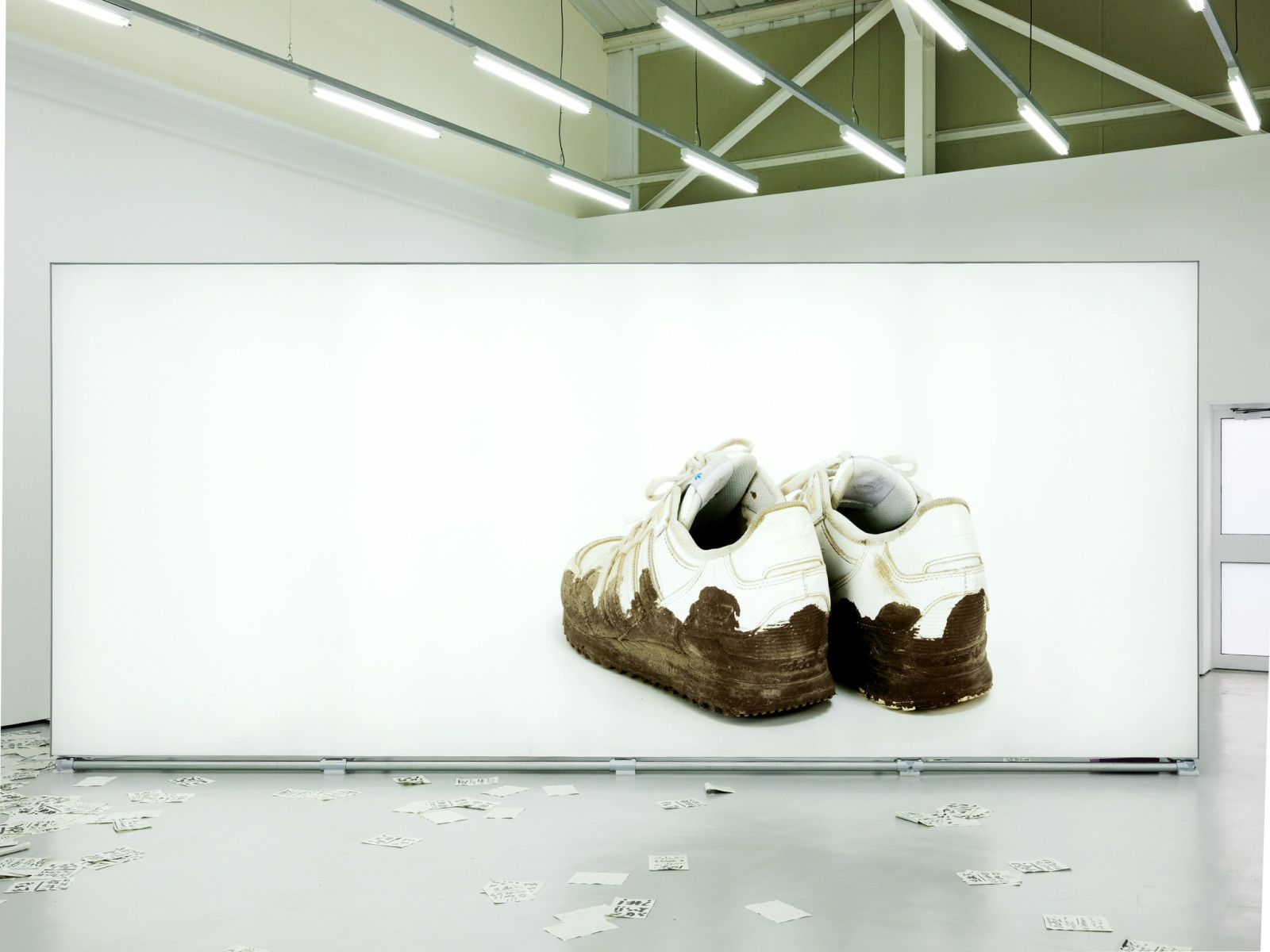
| Exhibition view: Ryan Gander, Natural and Conventional Signs, Solid Haus, Suffolk, 2021
© VG Bild-Kunst, Bonn, 2021. Photo © Studio Ryan Gander | |
|
At the center of the space, a very large backlit billboard displays a photographic image of a pair of faux-soiled Adidas trainers created by the artist in 2014. However, it is revealed these particular trainers were worn by Omar Ruvalcaba during September 2017 in the aftermath of the Mexico City earthquake, moving rubble and debris in search of life, following his own survival and escape from the collapsed concrete building in which he lived, creating yardsticks for value, worth, cost, and consequence. |
|
|
Ryan Gander – Natural and Conventional Signs – Online Tour
|
|
Join Ryan Gander on a tour of his exhibition with David Reinfurt, from the Princeton Program in Visual Arts, as they discuss the conception of the individual works and answer questions from the virtual audience. Recorded on February 9, 2021.
|
|
|
Rosa Barba – Selected Works, Online Viewing Room
|
|
Visit our Online Viewing Room Rosa Barba: Selected Works. One of the works presented, Inside the Outset: Evoking a Space of Passage, is a project that consists of two parts: a film and a long-term open-air cinema installation built in the UN Buffer zone on Cyprus.
|
|
|
Isa Melsheimer – false ruins and lost innocence, Online Viewing Room |
|
While her exhibition false ruins and lost innocence remains closed due to the current COVID19 restrictions, please explore Isa Melsheimer's presentation in our Online Viewing Room.
|
|
|
Spotlight is a new weekly presentation focusing on an artwork or a group of works. |
|
|
|
Roman Ondak
Bad News, 2018
Newspaper papier-mâché, revolving worktable
114 x 81 x 81 cm
|
|
Ryan Gander
Y gêm (My neotonic contribution to Modernism), 2017
Wood, polystyrene, artificial fur balls
118 x 75 x 60 cm
See the Spotlight
|
|
|
All Access is a new series of online visits to exhibitions that are currently closed to the public. As museums and galleries around the world remain closed, the series takes us into these spaces with the artists and curators as guides. |
|
|
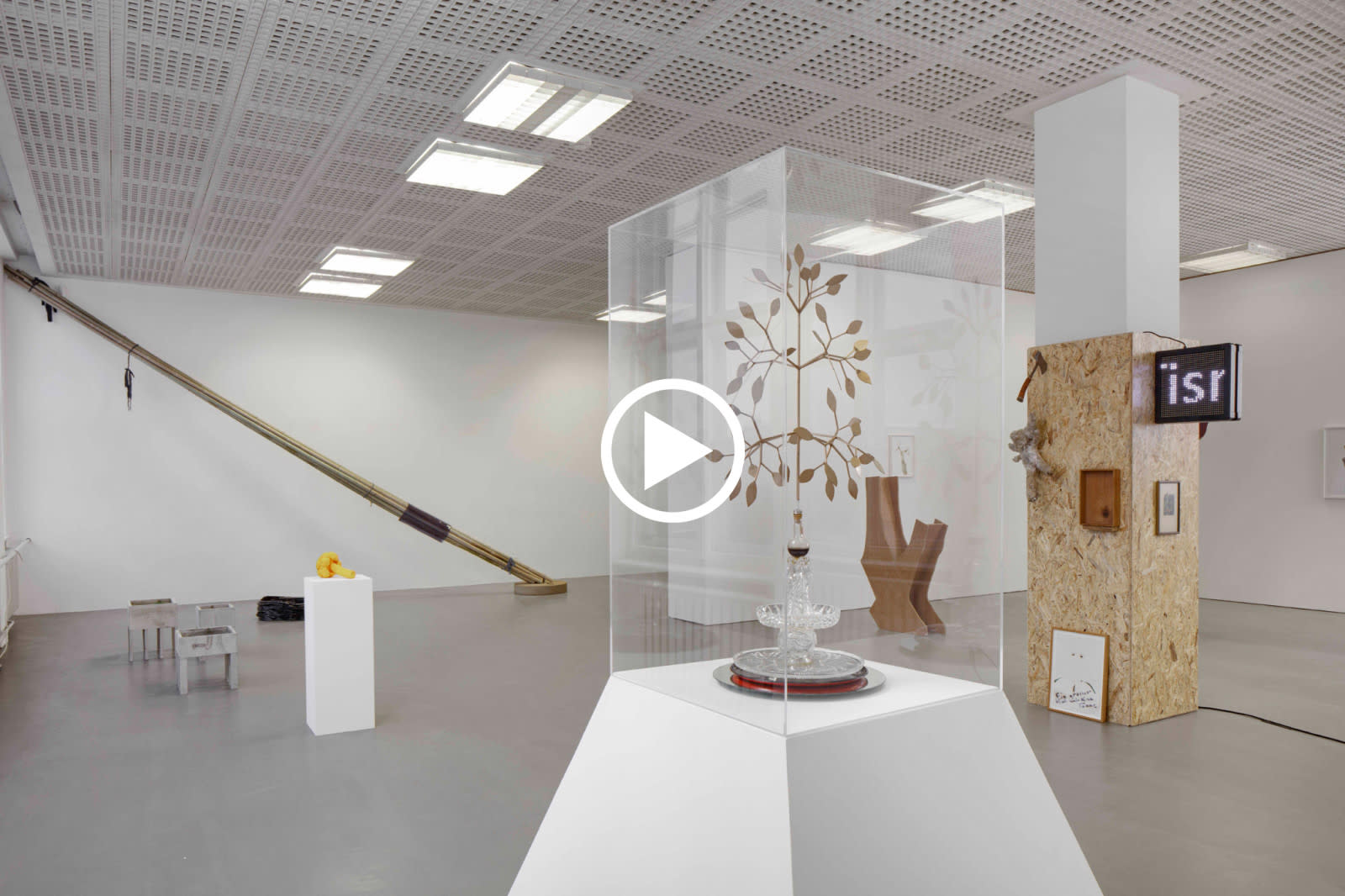
| Exhibition view: Mein Vater, meine Nachbarn, meine Freunde, und deren Freunde, with Angela Bulloch, Isa Melsheimer, and Christopher Roth, haubrok foundation, Fahrbereitschaft, Berlin, 2020
| |
|
For our first All Access, Jeanne Tremsal introduced her exhibition at FAHRBEREITSCHAFT together with Christopher Roth. Mein Vater, meine Nachbarn, meine Freunde, und deren Freunde with Angela Bulloch, Isa Melsheimer, and Christopher Rothhaubrok foundation, Fahrbereitschaft, Berlin www.tremsal.de
The exhibition Mein Vater, meine Nachbarn, meine Freunde und deren Freunde was curated by Jeanne Tremsal around the work of her father, Benoit. Their father-daughter relationship was always centered on art, and upon finding out that he had a terminal illness, Jeanne initiated an exhibition that responded to Benoit’s tree sculptures. The title refers to the community of artists that contributed responses to the trees: neighbors, friends, and their friends. FAHRBEREITSCHAFT in Berlin-Lichtenberg is one of the locations of the Haubrok foundation. In changing exhibition spaces throughout the dynamic arts and industrial yard, the foundation shows works from its collection, from artists working on site, or from guest curators and artists. |
|
|
Pierre Huyghe – Sun Rise | Sun Set, Schinkel Pavillon, digital opening
|
|
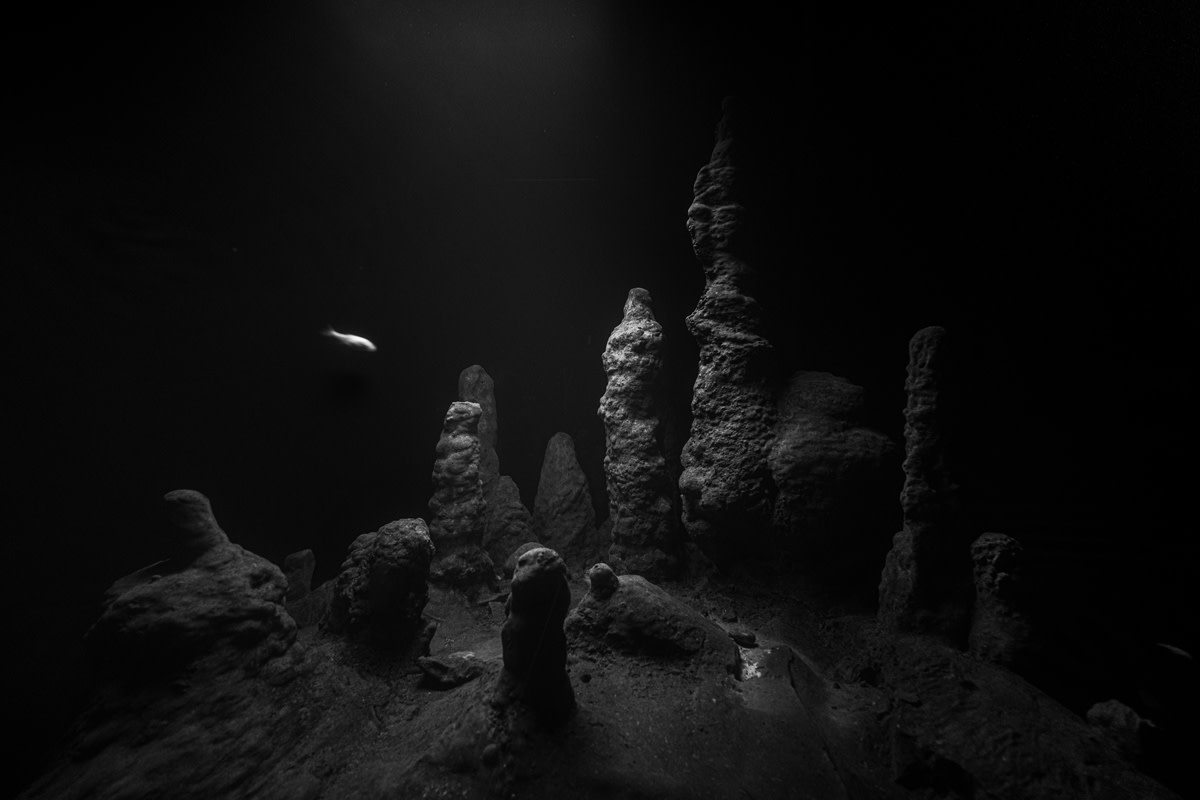
| Pierre Huyghe, Circadian Dilemma (El Día del Ojo), 2017, aquarium, Astyanax Mexicanus (eyeless and with eyes), algae, cave scan cast in concrete, black switchable glass, geo-localised program, 137.5 × 123 × 164.1 cm
© VG Bild-Kunst, Bonn, 2021. Photo © Rex Chu | |
|
Sun Rise | Sun Set with Pierre HuygheSchinkel Pavillon, Berlin Digital Opening February 26, 2021, 7 pm (CET) www.schinkelpavillon.deSun Rise | Sun Set brings together contemporary and 20th century artists to form a multi-layered response to the fast unfolding ecocatastrophe. The selected works permeate one another, creating small organisms and turning Schinkel Pavillon into a surreal landscape, highlighting the interconnectivity between humans, animals, plants, inanimate objects, technologies and non-beings. Due to the current COVID-19 restrictions the exhibition opens only digitally. Find a trailer for the exhibition HERE
Continuously updated programming information on the Schinkel Pavillon's social media channels can be found HERE
|
|
|
Out now!Liam Gillick, Mark Rappolt, Tom Eccles
Like a Moth to a Flame Come una falena alla fiamma 2021 Publisher: Corraini Edizioni Book design: Liam Gillick English/Italian Available here
Like a Moth to a Flame draws on the experience of the exhibition of the same name at the OGR in Turin, between 2017 and 2018, to recount how, over time, individual passions find their way into society and enter the cultural fabric of the city. The book traces the work done in Turin by three outstanding curators from around the world: Tom Eccles, director of Center for Curatorial Studies at Bard College in New York, Mark Rappolt, editor-in-chief of the British magazine Art Review, and Liam Gillick.In Like a Moth to a Flame, Liam Gillick’s photographs and the curators’ words retrace the origins and development of the exhibition, revealing its relevance, and are accompanied by an in-depth discussion with Liam Gillick and Hito Steyerl, as well as a conversation between the curator Anselm Franke and Mark Rappolt. This is not just the story of a major exhibition event, but a document that outlines a possible method, which is always open to discussion, for recounting a place through its artistic heritage.
|
|
|
Rosa Barba
From Source to Poem
2017
Publisher: Hatje Cantz
English/Italian
Available here
|
|
|
Ryan Gander
Soft Modernism
2017
Publisher: Gallery Hyundai
English/Korean
Available here
|
|
|
Liam Gillick
In Piedi in Cima a Un Edificio: Film 2008-2019 | Standing on Top of a Building: Films 2008-2019
2020
Publisher: Arte’m / Madre Napoli
English/Italian
Available here
|
|
|
Liam Gillick
Industry and Intelligence. Contemporary Art Since 1820
2016
Publisher: Columbia University Press
English
Available here
|
|
|
|
|